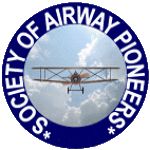|
|
|
Origins of "Quotes"From: Sid WugalterDate: 12/2/2015 12:56:34 PM CommentsEarly aircraft's throttles had a ball on the end of it, in order to go full throttle the pilot had to push the throttle all the way forward into the wall of the instrument panel. Hence "balls to the wall" for going very fast. And now you know, the rest of the story. ********************************* During WWII , U.S. airplanes were armed with belts of bullets which they would shoot during dogfights and on strafing runs. These belts were folded into the wing compartments that fed their machine guns. These belts measure 27 feet and contained hundreds of rounds of bullets. Often times, the pilots would return from their missions having expended all of their bullets on various targets. They would say, “ I gave them the whole nine yards,” meaning they used up all of their ammunition. ********************************* In George Washington's days, there were no cameras. One's image was either sculpted or painted. Some paintings of George Washington showed him standing behind a desk with one arm behind his back while others showed both legs and both arms. Prices charged by painters were not based on how many people were to be painted, but by how many limbs were to be painted. Arms and legs are 'limbs,' therefore painting them would cost the buyer more. Hence the expression, 'Okay, but it'll cost you an arm and a leg.' (Artists know hands and arms are more difficult to paint.) ****************************** As incredible as it sounds, men and women took baths only twice a year (May and October). Women kept their hair covered, while men shaved their heads (because of lice and bugs) and wore wigs. Wealthy men could afford good wigs made from wool. They couldn't wash the wigs, so to clean them they would carve out a loaf of bread, put the wig in the shell, and bake it for 30 minutes. The heat would make the wig big and fluffy, hence the term 'big wig'. Today we often use the term 'here comes the Big Wig' because someone appears to be or is powerful and wealthy. ********************************* In the late 1700's, many houses consisted of a large room with only one chair. Commonly, a long wide board folded down from the wall, and was used for dining. The 'head of the household' always sat in the chair while everyone else ate sitting on the floor. Occasionally a guest, who was usually a man, would be invited to sit in this chair during a meal.. To sit in the chair meant you were important and in charge. They called the one sitting in the chair the 'chair man.' Today in business, we use the expression or title 'Chairman' or 'Chairman of the Board.' ********************************* Ladies wore corsets, which would lace up in the front. A proper and dignified woman, as in 'straight laced' wore a tightly tied lace. ********************************* Common entertainment included playing cards. However, there was a tax levied when purchasing playing cards but only applicable to the 'Ace of Spades.' To avoid paying the tax, people would purchase 51 cards instead. Yet, since most games require 52 cards, these people were thought to be stupid or dumb because they weren't 'playing with a full deck.' ******************************** Early politicians required feedback from the public to determine what the people considered important. Since there were no telephones, TV's or radios, the politicians sent their assistants to local taverns, pubs, and bars. They were told to 'go sip some Ale and listen to people's conversations and political concerns. Many assistants were dispatched at different times. 'You go sip here' and 'You go sip there.' The two words 'go sip' were eventually combined when referring to the local opinion and, thus we have the term 'gossip.' ********************************** At local taverns, pubs, and bars, people drank from pint and quart-sized containers. A bar maid's job was to keep an eye on the customers and keep the drinks coming. She had to pay close attention and remember who was drinking in 'pints' and who was drinking in 'quarts,' hence the phrase' minding your 'P's and Q's'. ********************************** One more: bet you didn't know this! In the heyday of sailing ships, all war ships and many freighters carried iron cannons. Those cannons fired round iron cannon balls. It was necessary to keep a good supply near the cannon. However, how to prevent them from rolling about the deck? The best storage method devised was a square-based pyramid with one ball on top, resting on four resting on nine, which rested on sixteen. Thus, a supply of 30 cannon balls could be stacked in a small area right next to the cannon. There was only one problem....how to prevent the bottom layer from sliding or rolling from under the others. The solution was a metal plate called a 'Monkey' with 16 round indentations. However, if this plate were made of iron, the iron balls would quickly rust to it. The solution to the rusting problem was to make 'Brass Monkeys.' Few landlubbers realize that brass contracts much more and much faster than iron when chilled. Consequently, when the temperature dropped too far, the brass indentations would shrink so much that the iron cannonballs would come right off the monkey; Thus, it was quite literally, 'Cold enough to freeze the balls off a brass monkey.' (All this time, you thought that was an improper expression, didn't you.) | |
©
Society of Airway Pioneers | |
